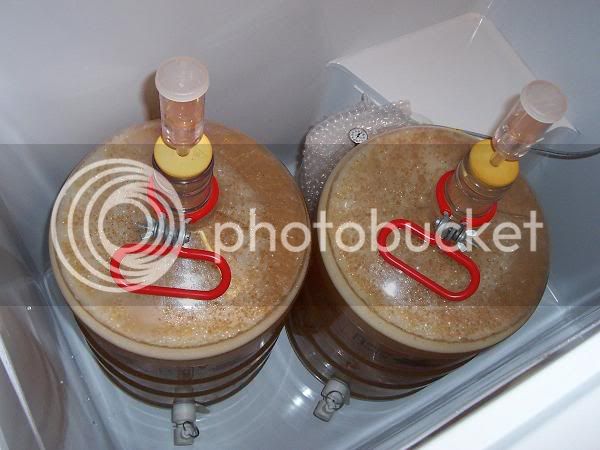Evan!
Well-Known Member
My previous question regarding w34/70 went unanswered, so I'm'a try this a little differently.
On average, what is your typical lager fermentation like? Do you get a large krausen? Is your airlock activity similar to your ale fermentations? How long does fermentation last?
I ask because I'm currently on my 6th lager. The first 5 had relatively short fermentations (within a week), a pretty big krausen (one even needed a blowoff tube), and staccato airlock activity like an ale. However, I kept hearing from people that lager fermentations typically take a couple weeks. Then I get into this latest lager, a pils, and I pitch the Saflager w34/70, which I've never used before. It took 2 days+ to start doing anything, and even then, it's just a really thin krausen with a bubble from the airlock every 5-10 seconds, rather than every second or faster.
So what is a "typical" lager fermentation supposed to be like? Have my first 5 lagers just been atypical, and this one is how it's supposed to be? Or is something wrong with this one?
On average, what is your typical lager fermentation like? Do you get a large krausen? Is your airlock activity similar to your ale fermentations? How long does fermentation last?
I ask because I'm currently on my 6th lager. The first 5 had relatively short fermentations (within a week), a pretty big krausen (one even needed a blowoff tube), and staccato airlock activity like an ale. However, I kept hearing from people that lager fermentations typically take a couple weeks. Then I get into this latest lager, a pils, and I pitch the Saflager w34/70, which I've never used before. It took 2 days+ to start doing anything, and even then, it's just a really thin krausen with a bubble from the airlock every 5-10 seconds, rather than every second or faster.
So what is a "typical" lager fermentation supposed to be like? Have my first 5 lagers just been atypical, and this one is how it's supposed to be? Or is something wrong with this one?




























![Craft A Brew - Safale BE-256 Yeast - Fermentis - Belgian Ale Dry Yeast - For Belgian & Strong Ales - Ingredients for Home Brewing - Beer Making Supplies - [3 Pack]](https://m.media-amazon.com/images/I/51bcKEwQmWL._SL500_.jpg)































